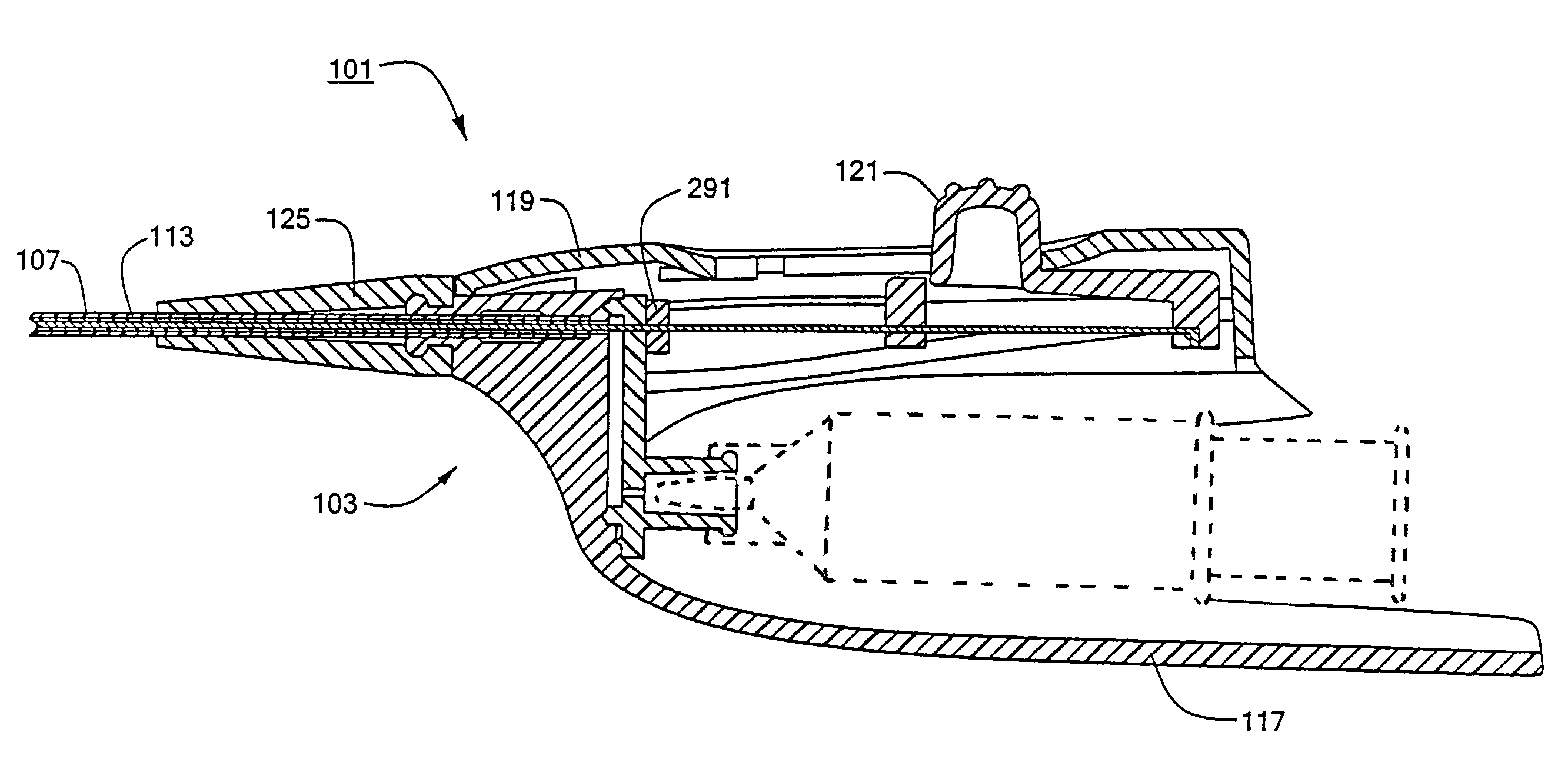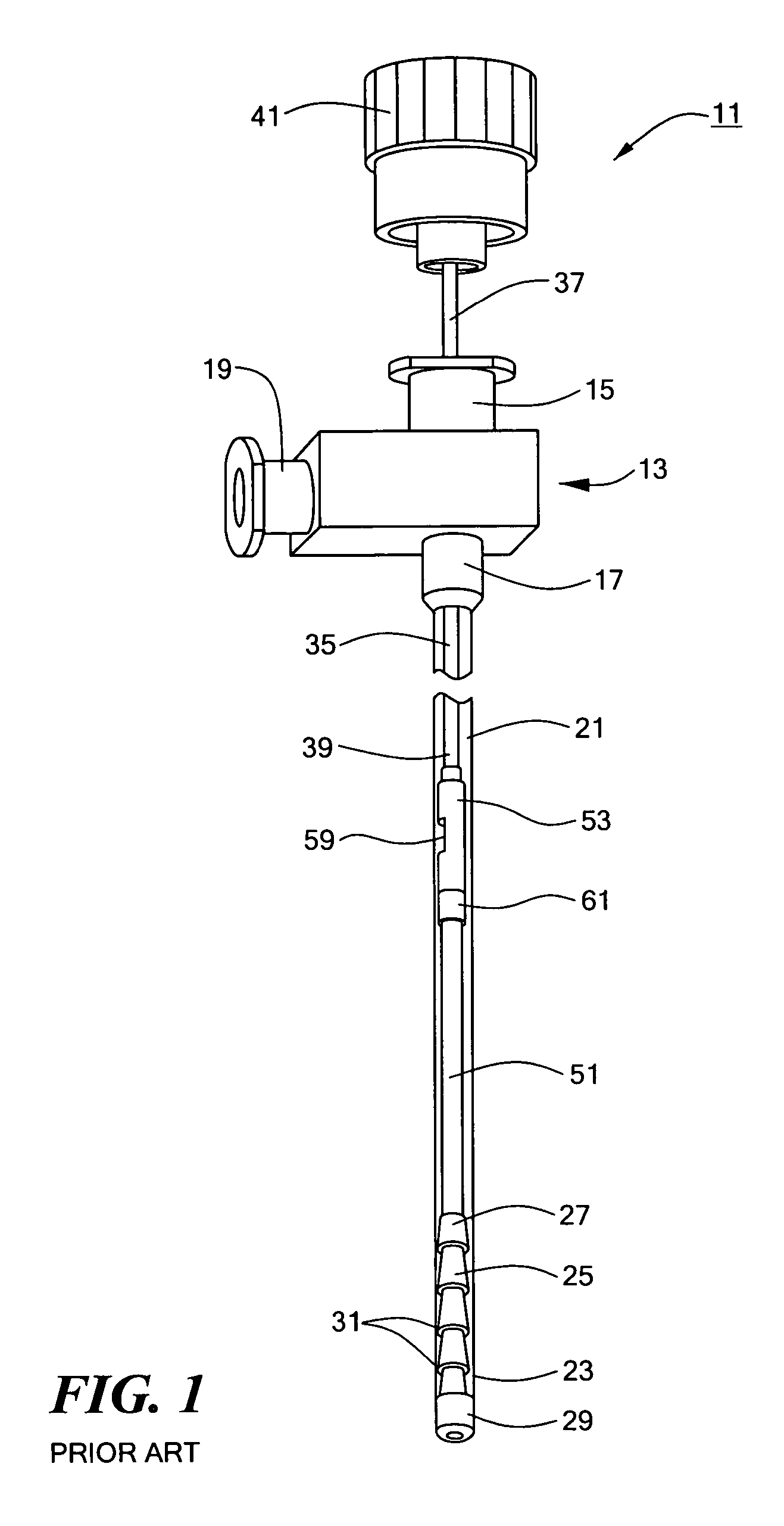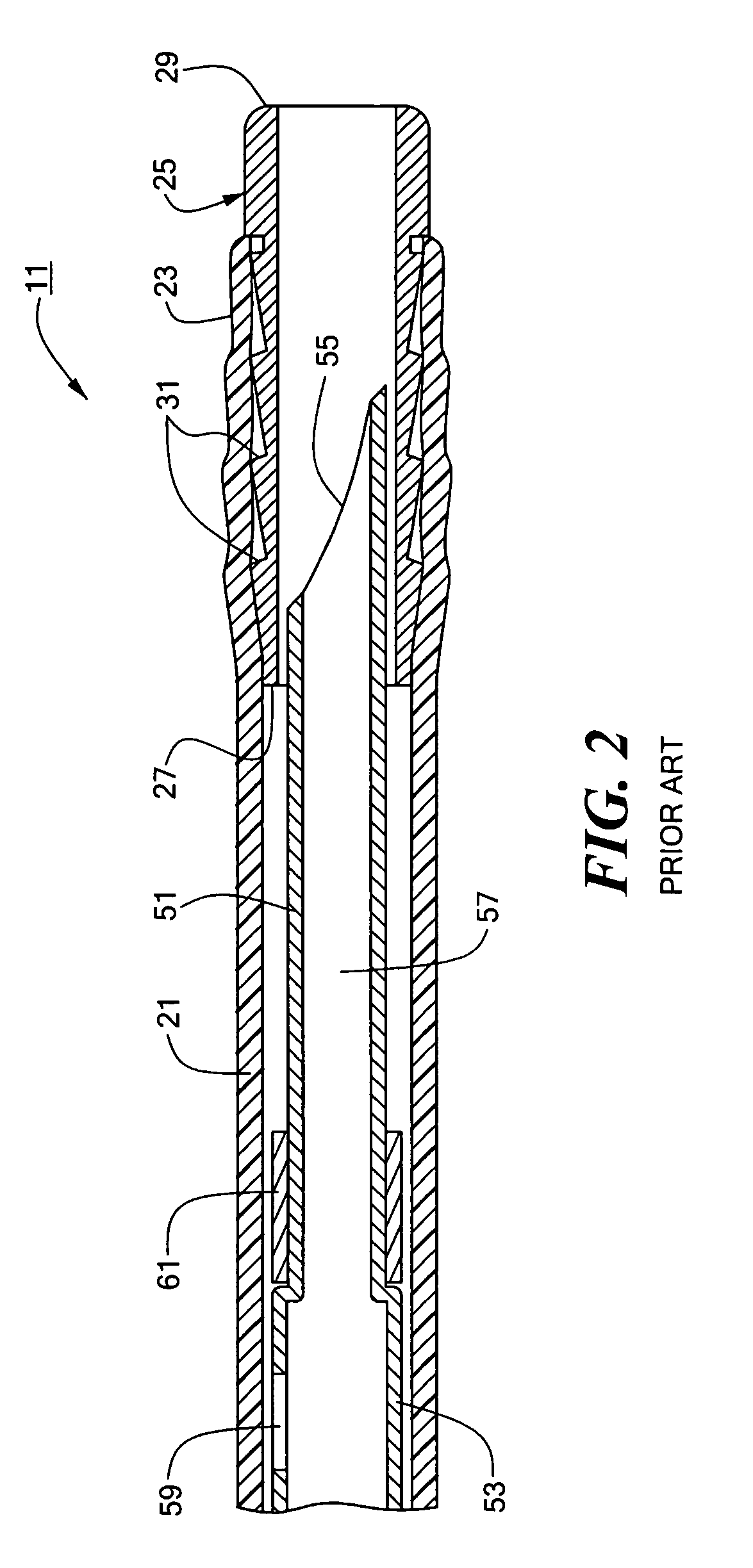Transbronchial needle aspiration device
a technology of transbronchial veins and needles, which is applied in the field of tissue sampling devices, can solve the problems of uncontrollable bleeding, death, and substantial complicating of the manipulation of the device, and achieves the effect of mass production and convenient operation
- Summary
- Abstract
- Description
- Claims
- Application Information
AI Technical Summary
Benefits of technology
Problems solved by technology
Method used
Image
Examples
Embodiment Construction
[0056]Referring now to FIGS. 3, 4, 5, 6(a) and 6(b), there are shown various views, respectively, of one embodiment of a transbronchial needle aspiration (TBNA) device constructed according to the teachings of the present invention, said TBNA device being represented generally by reference numeral 101.
[0057]Device 101 comprises a handle assembly 103, a wire 105, a flexible catheter 107, a sampling needle 109, a hub 111, a jacket 113 and a spring 115.
[0058]Handle assembly 103, in turn, comprises a body 117, a cover 119, a button slide 121, a syringe connector 123 and a strain relief member 125.
[0059]Referring now to FIGS. 7(a) through 7(f), body 117 is a unitary, generally C-shaped member, preferably made of a durable molded plastic or another similarly suitable material, comprising a top portion 131, a distal end portion 133 and a bottom portion 135, the sides and proximal end of body 117 being open. Top portion 131, distal end portion 133 and bottom portion 135 collectively define ...
PUM
 Login to View More
Login to View More Abstract
Description
Claims
Application Information
 Login to View More
Login to View More - R&D
- Intellectual Property
- Life Sciences
- Materials
- Tech Scout
- Unparalleled Data Quality
- Higher Quality Content
- 60% Fewer Hallucinations
Browse by: Latest US Patents, China's latest patents, Technical Efficacy Thesaurus, Application Domain, Technology Topic, Popular Technical Reports.
© 2025 PatSnap. All rights reserved.Legal|Privacy policy|Modern Slavery Act Transparency Statement|Sitemap|About US| Contact US: help@patsnap.com



